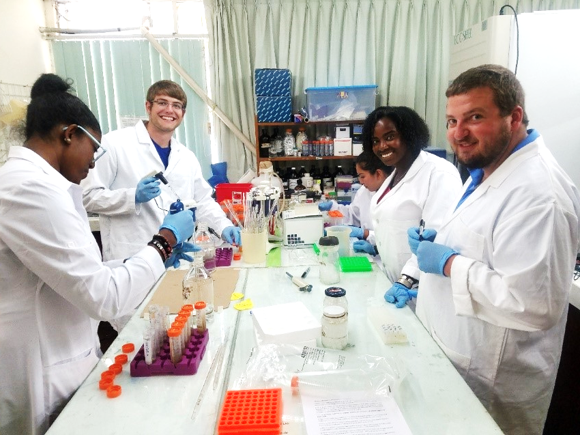TILT ANNUAL REPORT, 2016-17
HOME | Advancing Curricular Excellence | Engaging Students | Supporting Sutdent Success | Promoting Faculty Development
Engaging Students
Key areas of student engagement fostered by TILT include:
Office for Undergraduate Research and Artistry (OURA)
UROP is our general placement program for undergraduates seeking faculty mentored, experiential learning opportunities. At CSU, we guarantee a placement for every interested student.
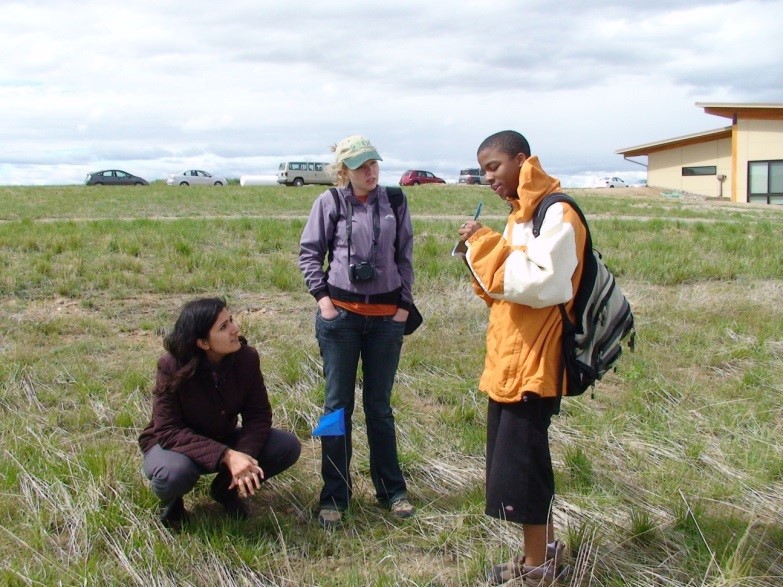 How it works: Undergraduates meet with one of our placement coordinators to discuss: 1) their disciplinary interests; 2) their career aspirations; 3) what they hope to gain from this experience; 4) their working style and availability; 5) their preferred style of oversight/mentoring; and 6) their unique needs. The placement coordinator addresses realistic expectations for the student and develops a list of available faculty mentors who are suitable for the student. The list of prospective mentors and their websites are presented to the student who then orders the list according to their preference. The placement coordinator reaches out to prospective mentors, presents details about the student, and coordinates an opportunity for the prospective mentor to meet the mentee. The meeting is a two-way interview such that the student determines the suitability of the mentor and the mentor determines the suitability of the mentee. (The placement coordinator prepares the student for this interview during their initial meeting). Students are encouraged to participate in as many interviews with prospective faculty mentors as necessary for them to feel confident in their choice.
Students participating in UROP are required to complete a certificate in the Responsible Conduct of Research (RCR).
Quick Facts: On average, each student meets with three prospective faculty mentors before accepting a placement.
Quick Facts (Scroll-Over): Approximately 81% of students who obtain a research placement through UROP continue working with their mentor for the duration of their undergraduate degree program.
How it works: Undergraduates meet with one of our placement coordinators to discuss: 1) their disciplinary interests; 2) their career aspirations; 3) what they hope to gain from this experience; 4) their working style and availability; 5) their preferred style of oversight/mentoring; and 6) their unique needs. The placement coordinator addresses realistic expectations for the student and develops a list of available faculty mentors who are suitable for the student. The list of prospective mentors and their websites are presented to the student who then orders the list according to their preference. The placement coordinator reaches out to prospective mentors, presents details about the student, and coordinates an opportunity for the prospective mentor to meet the mentee. The meeting is a two-way interview such that the student determines the suitability of the mentor and the mentor determines the suitability of the mentee. (The placement coordinator prepares the student for this interview during their initial meeting). Students are encouraged to participate in as many interviews with prospective faculty mentors as necessary for them to feel confident in their choice.
Students participating in UROP are required to complete a certificate in the Responsible Conduct of Research (RCR).
Quick Facts: On average, each student meets with three prospective faculty mentors before accepting a placement.
Quick Facts (Scroll-Over): Approximately 81% of students who obtain a research placement through UROP continue working with their mentor for the duration of their undergraduate degree program.
Program Outcomes: Between 2010 and 2017, OURA has averaged 720 new UROP participants/year. Self-efficacy surveys are administered to new UROP participants who are completing their first year of study at CSU. The same surveys are administered to those UROP participants at the conclusion of their 2nd year at CSU (which is the conclusion of their first year in UROP). The statements measure students’ perceived ability and/or confidence related to a defined learning objective. The results of these self-efficacy analyses are presented below, side-by-side with the results for a control group of non-UROP participants.
Summary of Methods: Students were presented a total of 5 statements, and asked to rate the degree to which they believed they could accomplish the task presented in each statement. The rating system was on a scale of 1 to 10, with (1) representing “No belief” and (10) representing a “Very Strong Belief” in the individual’s ability to complete the task.
Mentored Research and Artistry Program
The Office for Undergraduate Research and Artistry (OURA) facilitates opportunities for students to apply the theory they are learning in the classroom through high-impact, real world experiences. This office serves as an interface among students and faculty to ensure that all undergraduates at CSU have access to opportunities to explore and engage in their interests in research, artistry, and other forms of creative work within their respective disciplines. We also coordinate over a dozen formal experiential learning programs.
Quick Facts: Educational Research indicates that undergraduates who are engaged in faculty mentored research achieve higher academic performance, higher rates of retention, higher rates of entry into graduate and professional programs, and more rapid rates of advancement in the work place.

Service Learning Program
- Reported over 185,000 hours to the CSU STARS (Sustainability Tracking, Assessment & Rating System) application for annual service-learning hours, and instrumental in supporting our 2016 Platinum status achievement (in 2015 CSU was the first and only campus to gain this status). This data was generated through the CSU Faculty Service-Learning Phase I Assessment to calculate number of students engaged and hours contributed to service-learning, community-based research, and community engagement through coursework.
- In partnership with SLiCE, submitted data for the President’s Higher Education Community Service Honor Roll and tallied 23,300 students engaged with 243,658 hours of community service. Estimating that one volunteer hour in Colorado is worth $22.14 (based on national volunteer value provided by the National Corporation for Service), CSU's financial contribution to communities was $5,394,588.
- Supported CSU Faculty with 140 unique service-learning courses serving 3500 undergraduate and graduate students.
- Offered $10,000 in funding support for Faculty mini-grant competition resultant in approximately 6-8 new courses and/or course re-designs annually.
- Completed our Winter Warming Shelter Pilot Study with the City of Fort Collins (housed over 200 people), and established a collaborative CSU student service-learning training program in partnership with Catholic Charities and the City of Fort Collins.
- CSU’s Board Member representative for our regional Campus Compact of the Mountain West and co-sponsored the “Imagining America” Regional Engaged Faculty Institute with over 100 participants from 15 academic institutions.
- Supported Key Service Communities staff restructure and funding, resultant in a substantive increase in CSU student learning community outcomes and staff satisfaction: Demographics of the Key Service Community = Gender: Male – 40%, Female – 60% Residency: Colorado – 72%, Non-resident– 28% Ethnicity: Students of Color – 45%, White – 48%, Unknown – 7%; Key students are retained to the second fall semester at a rate that is higher than CSU’s overall rate (89.1% compared to 86.6%): Key was Non-Key Plus; 2.94 Cumulative GPA (114 average Index) compared to Key Plus: 3.10 Cumulative GPA (110 average Index); Overall, CSU learning community students had a higher GPA in Engineering, Health and Exercise Science, and Arts & Creative Expressions.
- Student representation for Service-Learning and Community-Based Research posters at CSU’s Celebrate Research and Creativity (CURC) increased by 15%.
Academic Integrity Program
Ramtegrity Week 2016
- On Monday, ASCSU students held “takeover” of CSU Snapchat account. The “story” was seen by approximately 3,700 people.
- On Twitter, our account amassed over 31,000 impressions during the week. We gathered hundreds of engagements on multiple tweets. Over 200 alone on a graphic we posted Wednesday.
- Gained 17 new followers during the week. We now have over 80 followers, including Dr. Frank.
- On Soundcloud, our content amassed over 70 plays during the week.
Academic Misconduct Hearing numbers
This year, I processed, adjudicated, or otherwise managed three hundred eighty-three (383) cases of Academic Misconduct. Tellingly, the number of Documentation Only cases saw a sharp rise from 197 in FY 2015-2016 to 283 cases in FY 2016-2017. The number of cases that involved disciplinary hearings stayed relatively constant (from 94 in AY 2015-2016 to 100 in 2016-2017). I believe this is due to greater confidence and participation in our process.
Presentations
In 2016-2017, twenty presentations were provided that reached over one thousand participants.
Hornors Undergraduate Research Scholars (HURS) Program
“Research opportunities” are the number one reason that CSU Honors Program students report having chosen CSU over their other options. Thus, HURS is designed to recruit high-achieving students to CSU by offering and coordinating research placements for prospective students before they matriculate. It involves a competitive selection process and, although it is not limited to honors students, the criteria for entering the program are more rigorous than those of the University Honors Program.
How it works: As high school students apply to CSU, OURA selects a subset of them (based on reported G.P.A. and standardized test scores) and sends formal invitations to apply for HURS. The HURS application allows students to express details of their interest in research and their ultimate career aspirations. Approximately 120 new HURS students matriculate each fall. By the time they arrive, prospective mentors have already been selected and HURS participants are given the opportunity to meet with each prospect and make their selection for a research mentor. As they make their selection, the HURS Program Coordinator provides advising and recommendations based on participants’ reported: 1) disciplinary interests; 2) career aspirations; 3) what they hope to gain from this experience; 4) working style and availability; 5) preferred style of oversight/mentoring; and 6) unique needs.
Students participating in HURS are required to participate in a 3-hour orientation session, complete a certificate in the Responsible Conduct of Research (RCR), and participate in the annual Celebrate Undergraduate Research and Creativity Showcase.
Quick Facts: On average, each student meets with three prospective faculty mentors before accepting a placement.
Quick Facts: Approximately 89% of students who obtain a research placement through HURS continue working with their mentor for the duration of their undergraduate degree program.
Program Outcomes: Between 2010 and 2017, OURA has averaged 120 new HURS participants/year. Self-efficacy surveys are administered to new HURS participants. The same surveys are administered to those HURS participants at the conclusion of their first full year in the program. The statements measure students’ perceived ability and/or confidence related to a defined program objective.
Summary of Methods: Students were presented a total of 5 statements, and asked to rate the degree to which they believed they could accomplish the task presented in each statement. The rating system was on a scale of 1 to 10, with (1) representing “No belief” and (10) representing a “Very Strong Belief” in the individual’s ability to complete the task.
International Summer Research Program
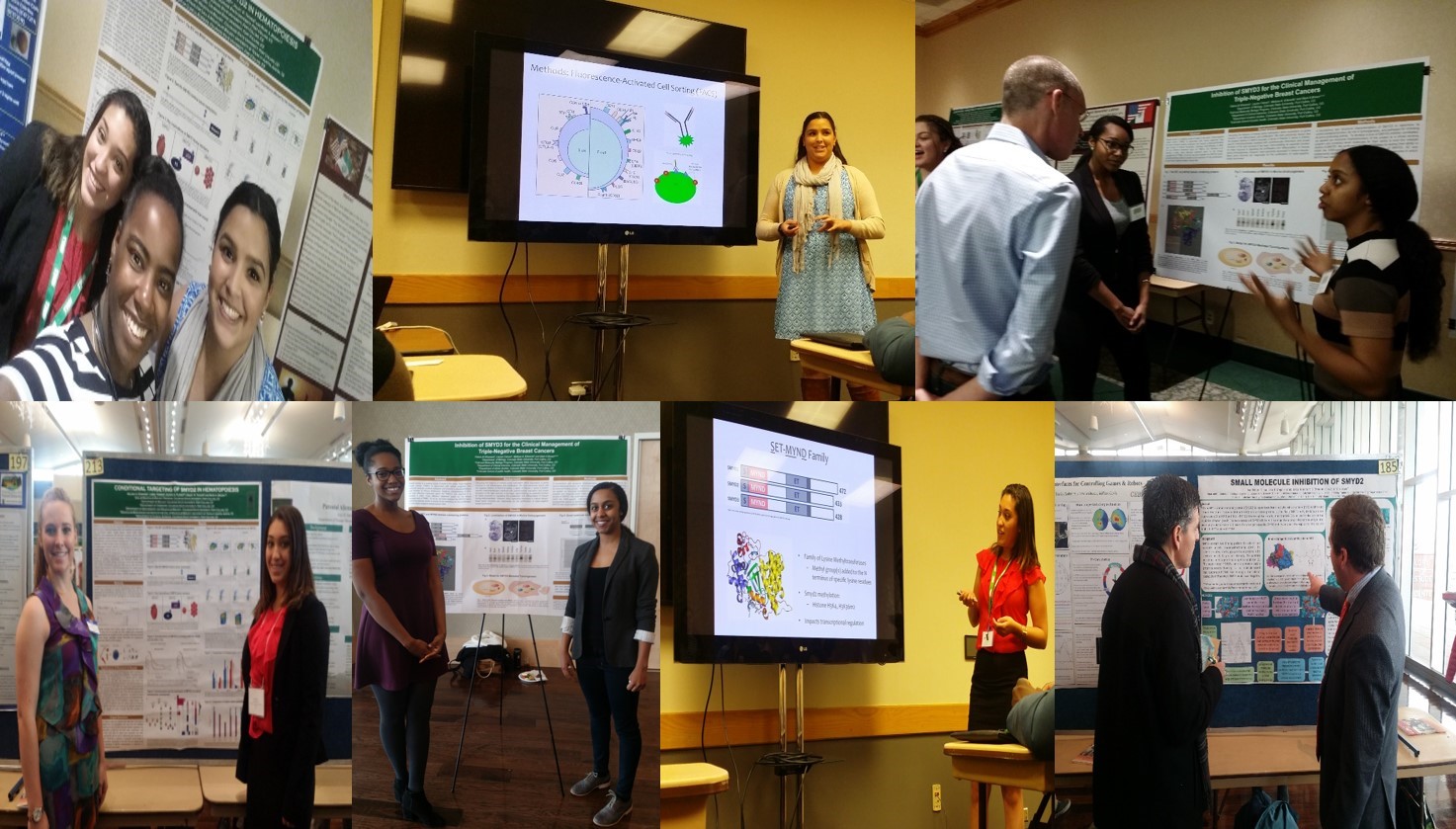 The International Summer Research Program is funded by a grant from the National Science Foundation (PI: Mark Brown) that supports annual cohorts of 6-8 CSU undergraduates to conduct research with foreign collaborators in Mexico. Recognizing that U.S. researchers are often perceived as arrogant by international collaborators, students in this program are required to participate in a cultural immersion experience that includes lessons in Spanish Language, Cultural Cues in Mexico, Cultural Sites of the Yucatan, and How to Conduct Research Business in Mexico. Cultural lessons and research training begin in the spring semester prior to the summer research experience (3 hours./week). Once onsite at the collaborating research facility, participants are required to speak Spanish. This aspect of our program will be disseminated (journals and presentations) as a broadly applicable method for training American scientists and engineers to conduct business throughout the world.
The International Summer Research Program is funded by a grant from the National Science Foundation (PI: Mark Brown) that supports annual cohorts of 6-8 CSU undergraduates to conduct research with foreign collaborators in Mexico. Recognizing that U.S. researchers are often perceived as arrogant by international collaborators, students in this program are required to participate in a cultural immersion experience that includes lessons in Spanish Language, Cultural Cues in Mexico, Cultural Sites of the Yucatan, and How to Conduct Research Business in Mexico. Cultural lessons and research training begin in the spring semester prior to the summer research experience (3 hours./week). Once onsite at the collaborating research facility, participants are required to speak Spanish. This aspect of our program will be disseminated (journals and presentations) as a broadly applicable method for training American scientists and engineers to conduct business throughout the world.
Quick Facts - What did our collaborators have to say about the cultural immersion experience? Our Mexican collaborators indicated that they were absolutely honored by the fact that our students spoke Spanish in the lab (imperfect, though it was) and presented their research findings in Spanish at the weekly research meetings. Our collaborators said that this was the ultimate sign of respect and that they greatly appreciated it. They also indicated that it is the first time they have ever spoken Spanish while working with American scientists. Previously, English was always assumed to be appropriate. Likewise, our participants were trained to interact according to the subtle cultural and social cues of our hosts. Thus, we trained the next generation of American scientists to be more effective in their conduct of business in foreign countries.
International Genetically Modified Machines (iGEM) Competitive Reserach Program
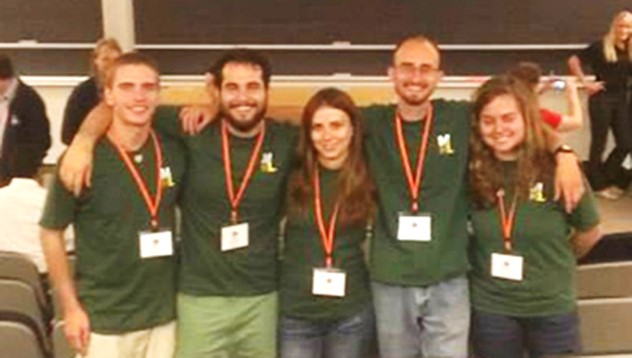 The iGEM program is dedicated to education related to synthetic biology and the development of an open research community of collaboration. Initially established at MIT, it is now an independent nonprofit organization with hundreds of participating cohorts throughout the world. CSU is the site of one of those cohorts. Our iGEM program was established in 2011 in the Office for Undergraduate Research and Artistry with support from the Office of the Vice President for Research. Each year, we recruit a cohort of five highly talented and motivated undergraduates to design and implement an iGEM project under the direction of a graduate student mentor and several faculty mentors. Thirty-five CSU students have participated in the program since 2011.
The iGEM program is dedicated to education related to synthetic biology and the development of an open research community of collaboration. Initially established at MIT, it is now an independent nonprofit organization with hundreds of participating cohorts throughout the world. CSU is the site of one of those cohorts. Our iGEM program was established in 2011 in the Office for Undergraduate Research and Artistry with support from the Office of the Vice President for Research. Each year, we recruit a cohort of five highly talented and motivated undergraduates to design and implement an iGEM project under the direction of a graduate student mentor and several faculty mentors. Thirty-five CSU students have participated in the program since 2011.
Quick Facts: The iGEM Steering Committee includes representatives from across CNS, CVMBS, and COE. The current faculty advisors for this program are Drs. Ashok Prasad and Christie Peebles.
Quick Facts: CSU’s iGEM program has won two awards at national research competitions in Boston and one award at the international level in Toronto.
Academy of Cultural Research Scholars Program
The Academy of Cultural Research Scholars includes an interdisciplinary group of undergraduates who have a common passion for understanding and protecting our cultural heritage and resources. This academy is currently engaged in the Dearfield Dream Project. This project is a collaborative research initiative to conduct cultural, anthropological, historical, and environmental studies on the early 20th Century African-American colony site of Dearfield, Colorado. Because the breadth and significance of the Dearfield Project requires an interdisciplinary research team, a network of research collaborators has been assembled. This research network seeks to discover, preserve, and disseminate knowledge of the site and its surrounding farmsteads' economic, social, political, and environmental history for better understanding and interpretation of its contributions to Colorado and U.S. history.
Program Outcomes: Between 2010 and 2017, this has averaged 47 participants/year (331 total participants). CSU participants have presented their research related to Dearfield at 3 national conferences (resulting in one award for best in show) and 2 regional research symposia. The Academy of Cultural Research Scholars have hosted two Dearfield 5K events during which hundreds of participants were guided on an historical-informative 5K route through Dearfield. CSU students served as volunteer interpreters along at key historic sites along the route. All proceeds were donated to the Black American West Museum to support ongoing Dearfield preservation efforts. The Academy recently hosted a national Dearfield Dream Conference at CSU during which hundreds of attendees from around the country presented research findings and initiatives related to Dearfield and other similar communities. Academy participants have participated in the following Dearfield research initiatives:
- Summer Archaeological Excavations: These include 8 surface and subsurface excavations to identify, catalog and preserve Dearfield artifacts. All artifacts are deposited in the Dearfield Archives of the Black American West Museum.
- Textile Preservation Project: This included the research, preservation, and presentation of several fragile Dearfield artifacts that were ultimately archived in the Dearfield Archives of the Black American West Museum. Participating students won “Best in Show” for the project at the annual Dearfield Dream Conference.
- Building Preservation Project: CSU Construction Management students are tasked with researching, developing and interpreting building plans to be used in the stabilization and preservation of several buildings at the historic townsite.
- Digital Archives: Students have been given access to a library of recorded interviews of former Dearfield residents. Students are tasked with transcribing the interviews and archiving the interviews for a digital archive to provide open access for researchers. Findings captured in these transcripts have contributed to several student papers and theses.
- Dryland Ecosystem Studies: The Dearfield community practiced dryland farming in a part of Colorado that was, otherwise, well irrigated. That is, being a black community, they were not granted access to the canal systems of eastern Colorado. Yet, this community was known for high yield bumper crops of strawberries, corn, and other high water consumption crops. CSU agricultural science students are developing a model, using the Dearfield site as a dryland control, for agricultural water consumption needs in eastern Colorado.
- Virtual Dearfield: Participants are using an original Dearfield town plot and historic photos to create a virtual tour of the historic town of Dearfield as it would have appeared in the 1930s.
- Dearfield Art Project: To raise awareness and funding for the Dearfield Dream Project, several art students have created artistic renderings of historic Dearfield photos.
Awards resulting from this project:
SOAR Award: Outstanding Diversity Program, Colorado State University
Of the Month Award for Diversity Program, National Residence Hall Honorary
Publications resulting from this project:
Brunswig R, Junne G, Bowser G, Renfrew E, Dickmann E, Purnell A, and Brown M. Dearfield Dream Project: Developing an
Interdisciplinary Historical/Cultural Research Network. Social Sciences, 2013, 2(3), 168-179.
See detailed info in OURA Report
Academy of Photo Research Scholars Program
The Academy of Photo Research Scholars includes a group of primarily art students who have a passion for real-world applications associated with photography. They search for ways to use a combination of new and historic photos to solve both practical problems and historical mysteries.
Program Outcomes:
To date, this academy has engaged a total of 32 CSU undergraduates. Academy participants have focused on the following initiative.
Our office was approached by a District Attorney’s Office (for political reasons, they have asked not to be identified) with an issue related to cases of domestic abuse being thrown out of the courtroom due to lack of adequate photo evidence. The District Attorney’s Office speculated that a “younger generation of photographers would have a better command of state of the art photographic technology.” They requested that we engage a group of student photographers to develop a manual for collecting photo evidence for first-responders. The manual was created and has been vetted by hundreds of first responders.
With the conclusion of the above project, this academy has no current projects. However, based on the feedback of the students who were involved, this was a life-changing, career-defining project. Therefore, we have maintained a shell for the academy should a new project be identified.
See detailed info in OURA Report [pdf]
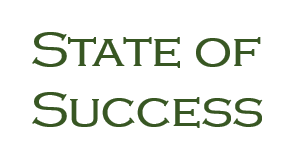
Testimonials
“Our research group was like a big family. We all helped one another and looked out for one another. If I was having a hard time, the other students, grad students, post-docs, and techs would encourage me to keep going. And when things went well, they were all there to congratulate me. Without their help and the help of my faculty mentor, I would have quit research a long time ago! Instead, I got hooked.”
Biological and Biochemical Engineering Major, Spring 2017
“I was terrified of my professors before I took a research position. My faculty mentor showed me that professors really are here to help me navigate my academic career and to prepare for my professional career! We met regularly and he gave me lots of feedback that showed me my mistakes were to be expected. Honestly, if I hadn’t failed in my experiments so many times, I don’t think I would remember their significance and I don’t think I’d be able to repeat them. Before this experience, I didn’t think it was OK to mess up. Now I see that messing up is part of the experiment and that it’s normal to mess up more than you are successful.”
Animal Science Major, Fall 2016

